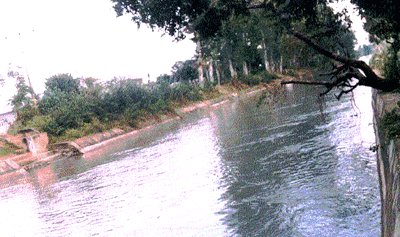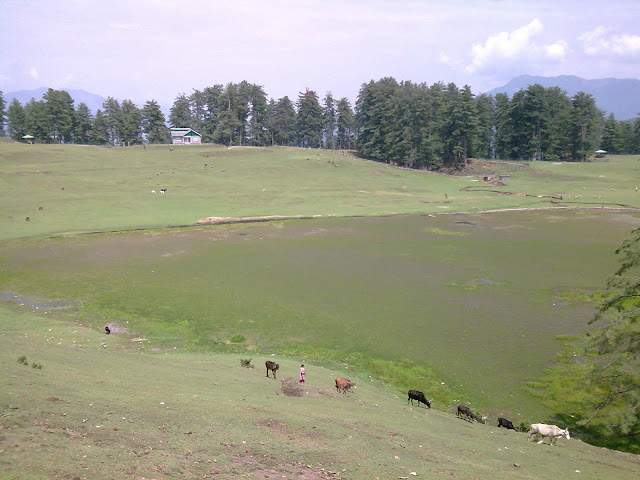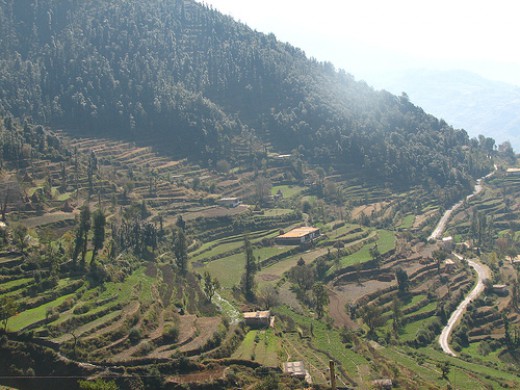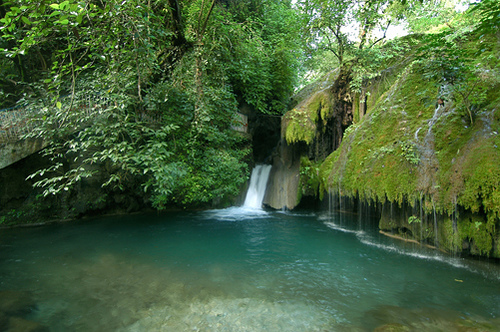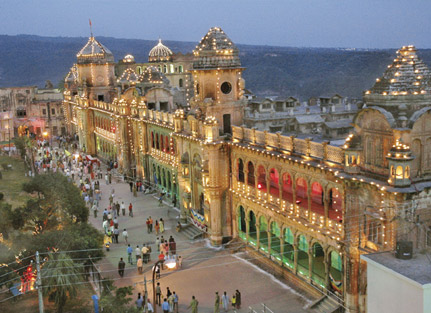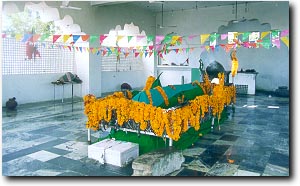Jammu
Jammu Tourist Attractions, Pictures, Photos, Travel Information, Sites to See, Best time to visit, Shopping, How to Reach by Road by Train, by Air, Flight
Jammu - the Duggar land where the past still has a living presence. A land of grand ancient temples, and beautiful palaces. Nestled against the backdrop of the snow-capped Pir Panjal Mountains, the region of Jammu constitutes the southernmost unit of the state of Jammu & Kashmir. It forms part of the transition between the Himalayan range in the north and the dusty plains of Punjab in the south. Between these two extremities lie a series of scrub-covered hills, forested mountain ranges and river valleys, encompassing several microclimatic regions that extend from Kishtawar in the north-east to Akhnoor in the south-west, and the historic town of Poonch in the north-west to the borders of Kangra (H P) in the south-east. The Shivalik hills cut across the area from the east to the west while the rivers Ravi, Tawi and Chenab cut their way through the region.
Jammu History
It is said that, on becoming King, the Suryavanshi Jambu Lochan went on a hunt and, crossing the Tawi, found a deer and a tiger drinking water from the same tank. His ministers explained that this meant that the soil of the place was so virtuous that no living creature bore enmity against another. He was so struck by this unusual sight that he decided to build a capital city on this land, 'Jambupura', on this soil, on the right bank of the Tawi, overlooking his brother king Bahu's fort.
Little is known of Jammu's subsequent history until, in 1730 AD, it came under the rule of the Dogra king, Raja Dhruv Deva. The Dogra rulers moved their capital to the present site and Jammu became an important centre of art and culture, especially the Pahari school of paintings.
Today, as if in testimony to Raja Jambu Lochan's vision innumerable temples and shrines, with glittering 'shikhars' soaring into the sky, dot the city's skyline, creating the ambience of a holy and peaceful city. The city of Jammu has come to be known as the 'City Of Temples'. Temple of Maha Kali ( better known as Bahu or Bawey Wali Mata), located in the Bahu fort, and considered second only to Mata Vaishno Devi in terms of mystical power was built shortly after the coronation of Maharaja Gulab singh, in 1822. The existing fort, as well as the Manasabdar's palace inside it, was constructed in 1820.
Fact File
Area : 20.36 Sqkm
Altitude : 305 mtrs
Rainfall : 107 cms (July to September)
Population(1981) : 2,23,361(apprx.)
Languages : Dogri, Hindi, English, Urdu, Kashmiri, Punjabi
Best Season : October to April
Temperatures(Average) : 26.2 to 4.3 degrees cent in winter. Temperatures in summer 43.0 to 23.4
Clothing : Heavy/Medium wollens in winters to light cottons in summers
Food : Every sort of vegetarian and non vegetarian food is available in multiple cuisines to suit every budget. Restaurants of all hues and shades are available all along the busy roads and other major spots. Foods suits all budgets and tastes.
Travels : Registered travel/tour operators are available.
Others : Tariffs are subject to change without notice and Cheques are not accepted.
Jammu Culture
Jammu region is home to several ethnic communities which follow traditional life-styles with distinctive cultures of their own.
Dogras : The Dogras constitute the dominant group. They are mainly concentrated in the outer hill and outer plain zones covering Kathua, Udhampur and Jammu districts and the lower parts of Rajouri district. A martial community by tradition, their folklore centres on eulogies for war heroes, both legendary and historical. Even the region's architectural heritage, comprising elaborate castles and hilltop fortifications that are visible everywhere, bespeak the community' s long-drawn preoccupation with battles and ruling of distant lands. Yet the region's history is not completely bereft of traditions of art and culture. Thus, while the troops fought battles in distant areas, the royalty and the nobility nurtured art and culture. The Pahari miniature paintings that have justly become famous throughout India, are the finest examples of their artistic achievements.
Gujjars : The second largest ethnic group of the region is formed by the Gujjars, a semi-nomadic people living along the hill slopes of Doda and Rajouri districts while in Poonch they also dominate the main valleys. Some of them have settled down to agriculture, but the majority are primarily herdsmen. They cultivate maize along the slopes of the mountains, but only as a secondary occupation.
Gaddis : The Bhalessa tract enveloping the adjoining hills of Chamba in Himachal Pradesh, is inhabited by the Gaddis, another semi-nomadic community, who graze immense flocks of goats and sheep along the Himalayan slopes. As summer draws on, the Gaddis move up the mountain pastures with their flocks, and return to the lower area with the first snowfall. Gaddis are generally associated with emotive music played on the flute.
Bakkarwals : The most interesting ethnic community, however, is that of the Bakkarwals, a wholly nomadic pastoral people who move all along the Himalayan slopes from the south to the north, always in search of pastures for their huge flocks of goat and sheep. Every summer, they move en-block across the various mountain ranges as far as the Suru Valley in the Ladakh region. They are an ancient people, the majority following the lifestyle that their ancestors have been leading throughout the ages. The Bakkarwals tend to sacrifice all personal comforts for the welfare of their goats and sheep, their economic mainstay.
Places To See / Excursions
Ranbir Canal - A small garden along the Ranbir Canal, which runs through the city outskirts, provides a cool picnic spot during the summer. The canal branches off from the river Chenab at Akhnoor, 32 kms away. Its water remains icy-cold throughout the year and its banks serve as good viewpoints and walkways.
Bahu Fort and Gardens - Situated 5 kms away from the city centre, Bahu Fort stands on a rock face on the left bank of the river Tawi. Perhaps the oldest fort and edifice in the city, it was constructed originally by Raja Bahulochan over 3,000 years ago. The existing fort was more recently improved upon and extended by the Dogra rulers. Inside, there is a temple dedicated to the Hindu goddess Kali. An extensive terraced garden, known as Bagh-e-Bahu, has been developed around the fort.
Patnitop - Patnitops Is the most popular tourist spot of Jammu region. Located 112 kms from Jammu this famous hill resort is perched on a beautiful plateau, at an altitude of 2024 metres across which the Jammu-Srinagar Highway passes. It has lush green meadow and pine trees which resembles with Gulmarg. Patnitop offers beautiful picnic spots, peaceful walks and breathtaking views of the mountains cape of the Chenab basin. In winter, it is covered with a white carpet of snow and its slopes have been successfully experimented for skiing. Skiing courses are conducted at Patnitop in the months of January and February. During winter months there are introductory courses for tourists / beginners at gentle gradient slopes of Patnitop. At Madhatop (5/6 Kms from Patni top on Sanasar Road) excellent possibilities for all kind of skiing exist. Skiing equipments and wooden sledges are available on hire at Patnitop and Sanasar. For beginners Instructors are also available. Accommodation is also available at Patnitop Hotels.
Sanasar - 129 Kms.from Jammu and only 19 Kms. from patnitop is Sanasar (2079 m), a satellite resort of Patnitop, with a cup-shaped meadow surrounded by gigantic conifers. A place for a quiet holiday, the meadow has now been developed as a golf course. There are several walks in the surrounding hills. The resort itself is ideal for paragliding, which is being promoted by the Tourism Department. Equipment can be hired from the tourist office in Jammu city. May to June and September to October are suitable months for paragliding in Sanasar. Tourists with own vehicle can go on to Sansar from Patnitop and return by the evening. The resort is 19 kms from Patnitop and a road connects the two. Sansar can be reached by bus or taxi from Jammu, via Kud and Patnitop.
Katra - Situated 50 Kms. from jammu this small town serves as the base camp for visting the famous shrine of Vaishnodevi in the Trikuta hills
KUD - Located 103 Kms. from jammu, this popular resort is situated on the Jammu-Srinagar Highway, at an altitude of 1738 metres.
Batote - Situated 125 Kms. from jammu at an altitude of 1560 metres on the Jammu-Srinagar national highway, this resort straddles the forested slopes of the Patnitop mountain range, overlooking the spectacular lie of the Chenab gorge.
Mansar Lake - Mansar Lake located 62 Kms. from Jammu is a beautiful lake fringed by forest-covered hills. Boating facilities are available in the spot. Every year around Baisakhi, a food and crafts festival is organised here by J&K Tourism.
Purmandal - 40 Kms. from Jammu, just off the National highway leading towards Pathankot is the Purmandal Temple Complex built on the banks of the sacred, mostly underground river Decak. Often referred to as 'Chhota Kashi', its main temple is dedicated to 'umapati', while the other temples are associated with Shaivites of the Kashmir Valley. Regular bus service from Jammu.
Shiv Khori - 100 Kms. from Jammu this holy cave, nearly a kilometre long with a 4-feet high naturally formed shivaling, is considered second only to the shrine of Vaishnodeviji. A major festival is held here on Shivratri Day.
Dera Baba Banda - It is a major Hindu-Sikh pilgrimage centre situated 75 Kms from Jammu. Baba Banda Bairaagi was Guru Gobind Singh's favourite 'Saint-Soldier', who had the Gurudwara constructed on the banks of river Chenab, where he spent his last days.
Sudh Mahadev - This holy spot near Patnitop is situated at an altitude of 1225 mtrs., about 120 Kms. from Jammu. The shrine is visited by pilgrims on the full moon night of 'Sawan'(July-August) to worship the 'Trishul'(trident) and a mace which is said to belong to Lord Shiva. The Devak stream originates at Sudh Mahadev and disappears among the rocks a few kilometres down stream.
Gauri Kund- Short of Sudh Mahadev is the legendary spring where the Goddess parvati used to bath before commencing Her daily prayers at Sudh Mahadev. This spring came to be named after Her as 'Gauri Kund'.
KRIMCHI - On the way to Sudhmahadev-Mantalai, a short detour takes one to Krimchi, site of three of the oldest temples of Jammu. The architecture of the temples shows distinct Greek (Hellenic) influences. Pancheri, a hill resort is a short distance away from here.
Jajjar Kotli - 35 Kms. from Jammu on the National Highway leading towards Srinagar is the Jajjar Kotli Tourist Complex, built on the banks of the Jajjar rivulet. The crystal clear, cool water of Jajjar attract picnickers in large number during summer. A Tourist Cafeteria, a Bar and a small Tourist Bungalow are the facilities provided here by JKTDC.
Akhnoor - 32 Kms. to the west of Jammu situated on the banks of the mighty Chenab river is the historic town of akhnoor. This town is associated with the legend of Soni-Mahiwal. Ruins of the Indus-Valley civilization are to be seen along the river bank commanding a panoramic view all around.
Salal Dam And Lake - 95 Kms.from Jammu to the west of the Holy Shrine of Vashnodeviji is the Salal Dam and Lake. With an installed capacity of 400 mw of electricity, this is the largest Hydroelectric Project commissioned in the state so far. The lake formed behind the dam is 33 Kms. long. The Dam site can be visited with the permission of the project authorities.
Baba Dhansar - 65 Kms. from Jammu, on way to Salal Dam, Baba Dhansar is a beautiful and cool picnic spot. Here, a huge spring gushes out of the mountainside in a thick grove of trees and froms a number of small water-falls before flowing into the holy Banganga. Next to the spring in a small grove in the rock face is a naturally formed Shivling on which droplets of water fall naturally all the year round. A big mela is held here during Shivaratri.
Jammu Temples
Jammu is justly famous for its temples. Infact it is known as the city of temples and the every fame of its tends to overshadow its palaces, forts, forests and powerful ziarats. If Bahu Mata is the presiding deity of Jammu, the dargah of Peer Budhan Ali Shah is the other shrine that protects Jammuites. The other major tourist attractions are:
Raghunath Temple - Situated in the heart of the city and surrounded by a group of other temples, this temple, dedicated to Lord Rama, is outstanding and unique in northern India. Maharaja Gulab Singh, founder of the principality of Jammu and Kashmir, began the construction of the Raghunath Mandir Complex in the crowded downtown Bazaar named after it, in 1835 AD and was completed by his son, Maharaja Ranbir Singh, in 1860 AD. It consists of a cluster of temples and is the largest temple complex in northern India. Its inner sanctums contain gigantic statues of deities and numerous 'lingams'. It contains representatives of almost the entire Hindu pantheon, , though the emphasis falls on the various incarnations of Lord Vishnu, which make it a rare site to behold. The complex houses a rich collection of ancient texts and manuscripts. The inner walls of the main temple are covered with gold sheet on three sides. There are many galleries with innumerable 'saligrams'. The surrounding temples are dedicated to various Hindu deities from the epic Ramayana.
Ranbireshwar Temple - Located on Shalimar Road near the New Secretariat and built by Maharaja Ranbir Singh in 1883 AD, this historic temple is dedicated to Lord Shiva. It has one central 'lingam' measuring seven-and-a-half ft in height, twelve Shiva 'lingams' of crystal measuring from 15" to 38" and galleries with thousands of others carved on stone slabs.
Mahamaya Temple and City Forest - On the bypass Road, behind Bahu Fort, the city forest surrounds the ancient Mahamaya temple overlooking the river Tawi. A small garden surrounded by acres of woods provides the best view of the city.
Mubarak Mandi Palace - The oldest buildings in this palace complex date back to 1824. The architecture is a blend of Rajasthani, Mughal and even baroque elements. The most stunning segment is the Sheesh Mahal. "The Pink Hall" houses the Dogra Art Museum which has miniature paintings of the various Hill Schools.
Peer Khoh - Peer Khoh is a cave shrine located on the Circular Road, 3.5 kms from the heart of the town. There is a naturally formed Shiva lingam in the cave which is quite mysterious as neither its antiquity nor its cause are known. Legend has it that the cave leads underground to many other cave shrines and even out of the country.
Peer Baba - Behind the Civil Airport is the famous durgah of the Muslim saint, Peer Budhan Ali Shah. On Thursdays, Hindu and Sikh devotees who visit this shrine, vastly outnumber the Muslim devotees.
Shopping
Shopping in Jammu shares a charmingly contradictory aspects where among the age-old dry fruit shops, you'll find designer boutiques that display the very latest in fashion and fashion accessories. Here the main bazaars – Vir Marg, Raghunath Bazaar and Hari Market – are famous for Kashmiri handicrafts, traditional Dogra jewellery and various dry fruits, chiefly walnuts ('akhrot') and almonds. Jammu is also known for the superlative quality of its 'basmati' rice, 'rajma' (red beans), 'ampapar' (dried and candied mango peel), 'anardana' (dried pomegranate seeds) and 'barfi' (milk sweets). For purchasing authentic Kashmiri handicrafts, one can visit the J&K Government Arts Emporium near the Tourist Reception Centre on Residency Road. The emporium displays and sells a wide variety of handicrafts, including Pashmina shawls and exquisite hand-knotted carpets of silk and wool.
How to Reach Jammu
In the following paragraphs, we have provided information about various ways of reaching to Jammu. Traveling to Jammu city is quite easy and accessible. Read on to know more about how to reach Jammu.
How to Reach Jammu By Air: The city of Jammu has its own airport, well connected with most of the important cities. Almost all the major airlines like Indian Airlines, Jet Airways, etc operate flights to Jammu on a regular basis.
How to Reach Jammu By Rail: The most important railway station in the entire state of Jammu and Kashmir is that of Jammu only and is known as Jammu Tawi station. The station is well connected with almost all the key cities of India.
How to Reach Jammu By Road: Jammu has good network of roads connecting it with all major cities like Delhi, Amritsar, Ambala, Chandigarh, Ludhiana, Jalandhar, Shimla, etc.



